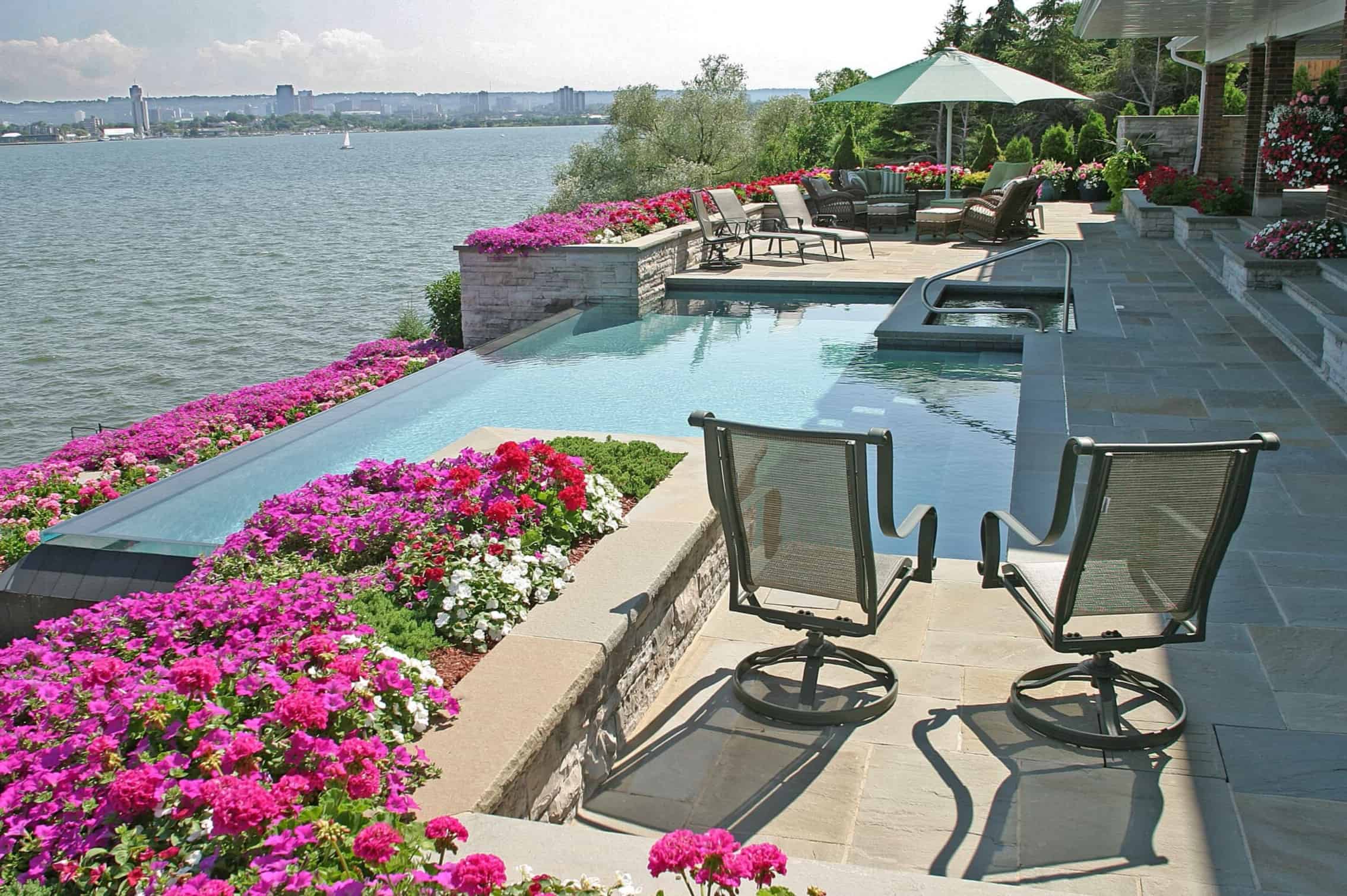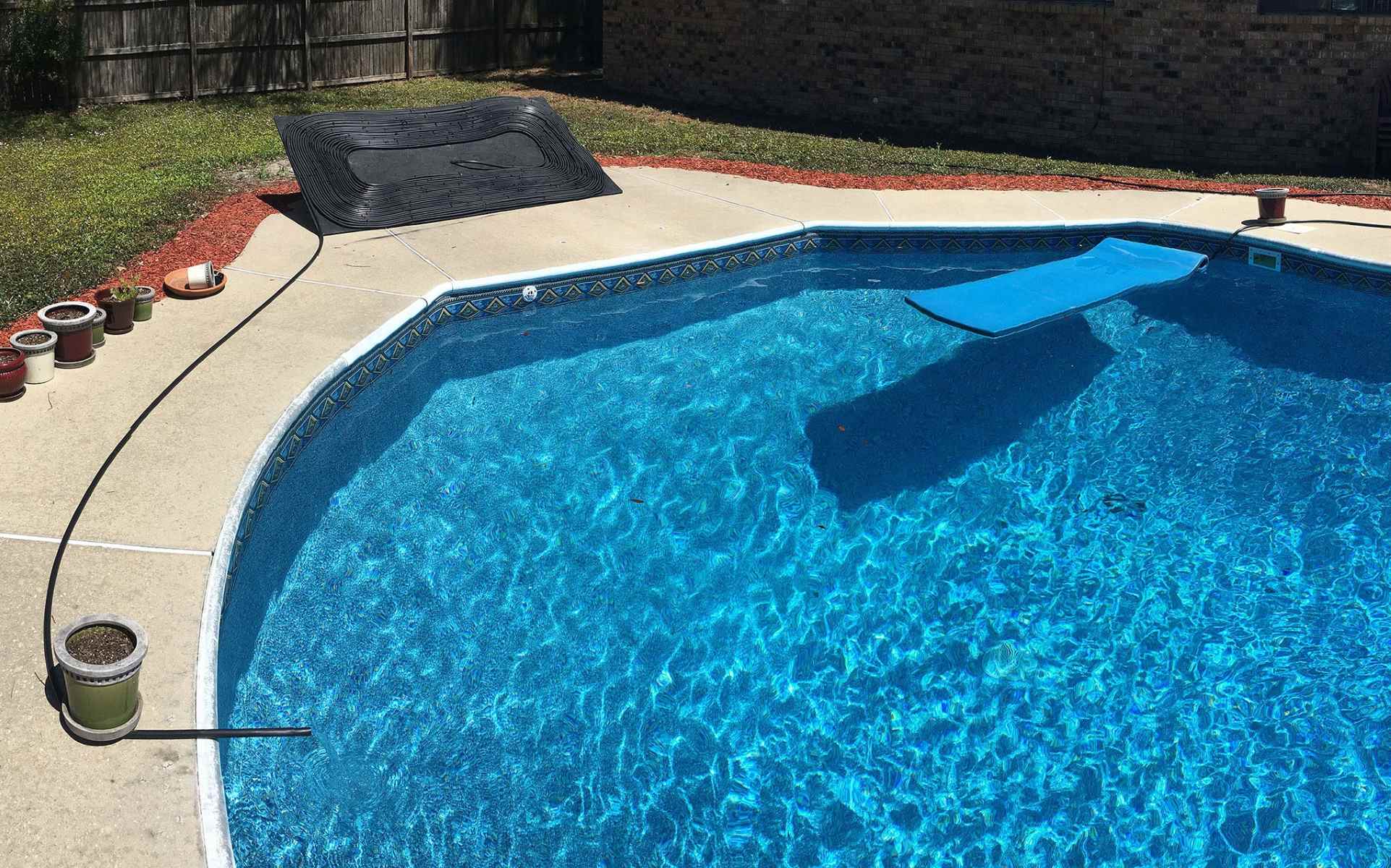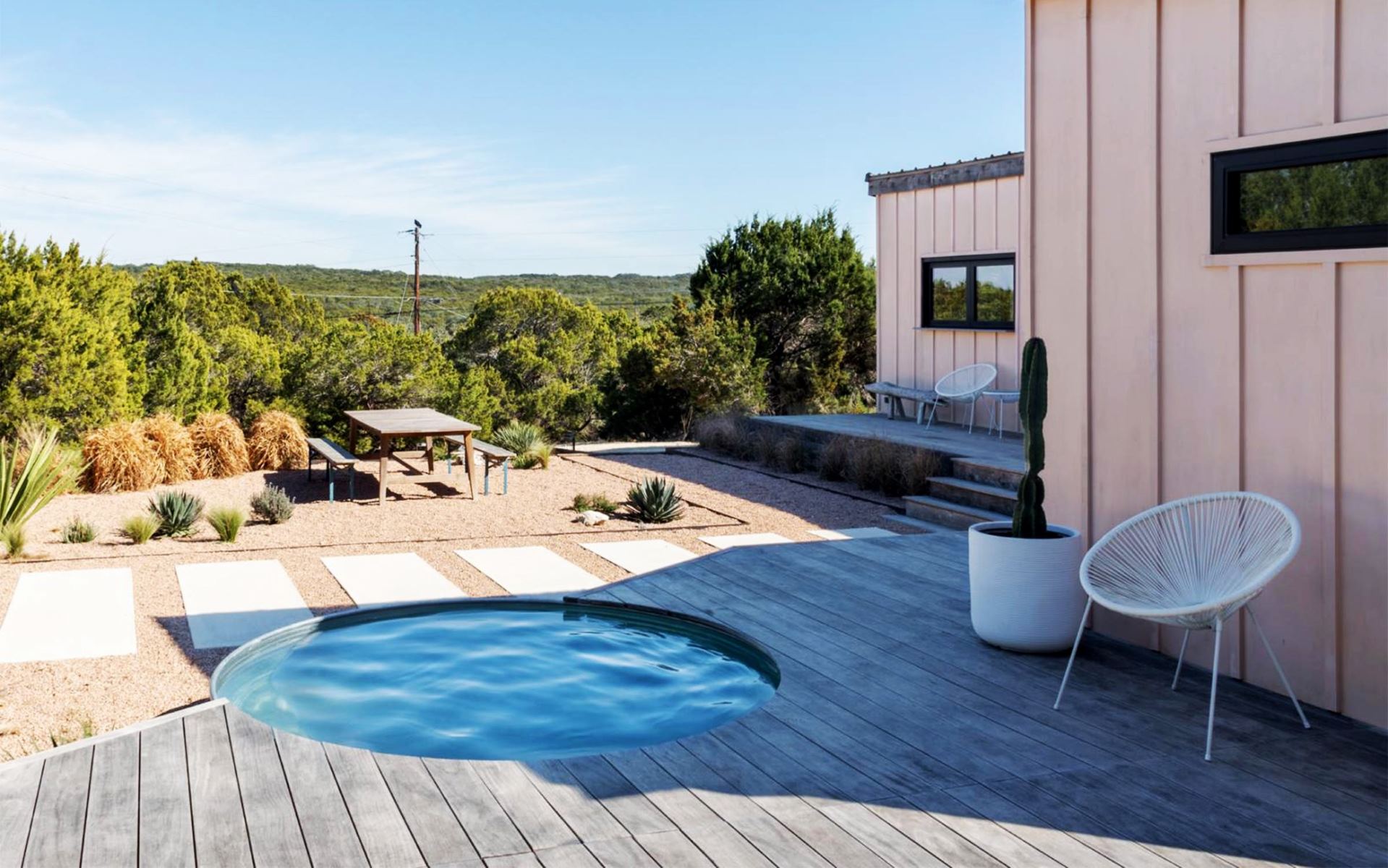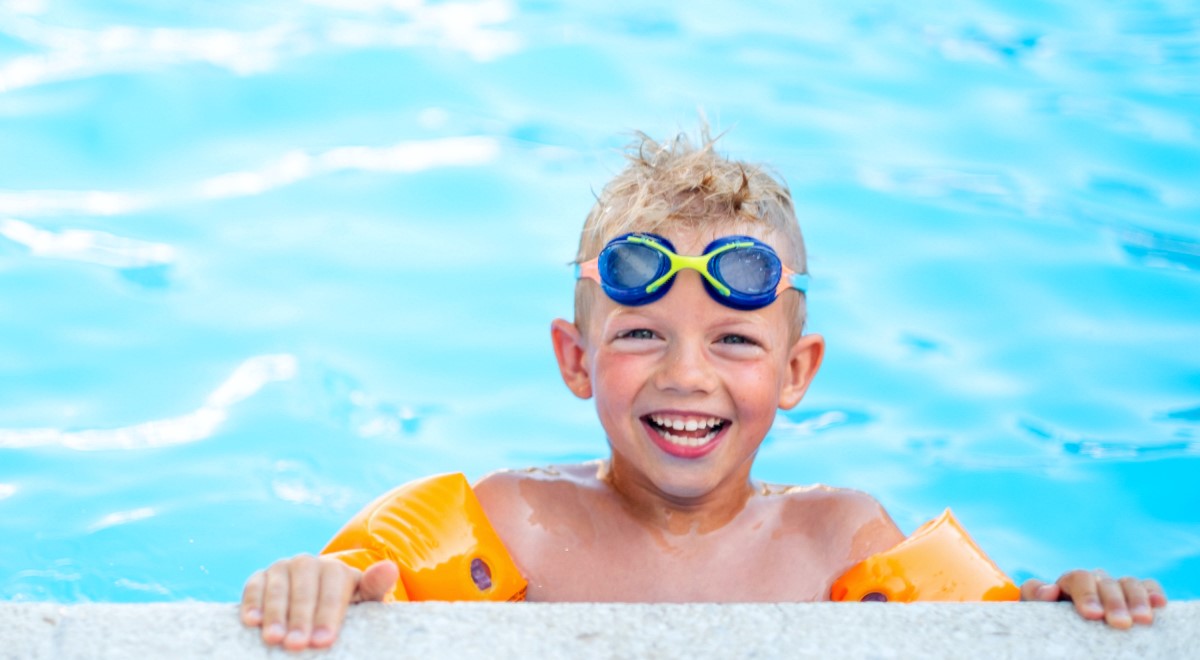Home>Gardening & Outdoor>Outdoor Recreation & Activities>How To Make A Saltwater Swimming Pool


Outdoor Recreation & Activities
How To Make A Saltwater Swimming Pool
Published: February 18, 2024
Learn how to create a refreshing saltwater swimming pool for your outdoor recreation and activities. Discover the steps to enjoy a pristine and eco-friendly pool.
(Many of the links in this article redirect to a specific reviewed product. Your purchase of these products through affiliate links helps to generate commission for Storables.com, at no extra cost. Learn more)
Introduction
Creating a saltwater swimming pool is a fantastic way to bring the refreshing and invigorating experience of the ocean right into your backyard. Unlike traditional chlorine pools, saltwater pools offer a gentler and more natural swimming environment, making them increasingly popular among homeowners. By following a few essential steps, you can transform your ordinary pool into a luxurious saltwater oasis that provides a soothing and rejuvenating swimming experience for you and your family.
In this comprehensive guide, we will walk you through the process of making a saltwater swimming pool, from selecting the ideal location to maintaining the pool for long-term enjoyment. Whether you're considering converting your existing pool or planning to build a new one, this step-by-step approach will equip you with the knowledge and confidence to create a stunning saltwater pool right in your own backyard.
With a focus on sustainability and comfort, a saltwater pool offers numerous benefits, including reduced skin and eye irritation, lower maintenance requirements, and a softer feel to the water. By understanding the key principles of saltwater pool maintenance and operation, you can ensure that your pool remains a source of relaxation and enjoyment for years to come.
So, let's dive into the exciting world of saltwater swimming pools and discover how you can transform your outdoor space into a tranquil and luxurious retreat. Whether you're a seasoned pool owner or a first-time enthusiast, this guide will provide you with the insights and knowledge needed to embark on this rewarding journey of creating your very own saltwater paradise.
Key Takeaways:
- Transform your backyard into a tranquil saltwater oasis for a gentler, more natural swimming experience. Follow the steps to create a luxurious retreat with reduced maintenance and increased comfort.
- Enjoy the benefits of a saltwater pool, from relaxation and wellness to memorable gatherings and a deeper connection with nature. Embrace the joy and personal wellness it brings to your lifestyle.
Read more: How To Open A Saltwater Swimming Pool
Step 1: Choosing the Right Location
Selecting the ideal location for your saltwater swimming pool is a crucial first step in the transformation process. The placement of the pool can significantly impact its overall functionality, aesthetics, and long-term maintenance. Here's a detailed look at the key factors to consider when choosing the right location for your saltwater pool:
-
Sunlight Exposure: Assess the amount of sunlight the area receives throughout the day. Optimal sunlight exposure is essential for maintaining the water temperature and promoting the natural production of chlorine from the saltwater. Aim for a location that receives ample sunlight, preferably for at least six to eight hours daily.
-
Landscaping and Surroundings: Take into account the existing landscaping and surroundings. Consider how the pool will integrate with the overall design of your outdoor space. Additionally, evaluate the proximity of trees and shrubs to prevent excessive debris from falling into the pool, which could affect water quality and maintenance efforts.
-
Accessibility and Privacy: Evaluate the accessibility of the chosen location from your home and other outdoor amenities. Additionally, consider the level of privacy the area offers. A well-placed pool provides a balance of accessibility and privacy, creating a serene and inviting atmosphere for relaxation and recreation.
-
Ground Stability and Drainage: Assess the stability of the ground and the natural drainage patterns in the chosen area. It's essential to ensure that the ground is stable and properly graded to prevent potential issues such as soil erosion and water accumulation around the pool area.
-
Utility Connections: Consider the proximity to utility connections, including water, electricity, and drainage. Access to these utilities is essential for the construction and ongoing operation of the saltwater pool, ensuring seamless functionality and convenience.
By carefully evaluating these factors and selecting a location that aligns with your vision for the saltwater pool, you can lay a solid foundation for the successful creation of a stunning and functional outdoor oasis. The right location sets the stage for a harmonious integration of the pool with your outdoor living space, maximizing enjoyment and minimizing potential challenges in the future.
Step 2: Installing the Saltwater System
The installation of the saltwater system is a pivotal phase in the transformation of your pool into a saltwater oasis. This process involves the integration of specialized equipment and components that work together to generate and maintain the ideal saltwater environment for swimming. Here's a detailed overview of the essential steps involved in installing the saltwater system:
-
Selecting the Saltwater Generator: The heart of the saltwater system is the saltwater generator, also known as a chlorine generator. This device utilizes electrolysis to convert the dissolved salt in the pool water into chlorine, effectively sanitizing the water. When choosing a saltwater generator, consider factors such as the size of your pool, the desired chlorine output, and the system's compatibility with your pool's existing infrastructure.
-
Integration with the Filtration System: The saltwater generator needs to be seamlessly integrated with the pool's filtration system. This ensures that the chlorine produced is efficiently circulated throughout the pool, maintaining water clarity and hygiene. Proper integration also involves coordinating the installation of the generator with the existing plumbing and filtration components, ensuring a cohesive and functional system.
-
Adding the Salt: Once the generator is in place, the next step is to add the appropriate amount of pool-grade salt to the water. The salt concentration in a saltwater pool is significantly lower than that of seawater, typically ranging from 2,500 to 4,000 parts per million (ppm). It's crucial to follow the manufacturer's guidelines for salt dosage to achieve the optimal salinity level for the generator to produce chlorine effectively.
-
Calibrating the System: After the salt is added, the saltwater generator needs to be calibrated and programmed according to the specific requirements of your pool. This involves setting the desired chlorine output levels, runtime schedules, and any additional features offered by the generator. Proper calibration ensures that the system operates efficiently and maintains the ideal chlorine levels for a clean and safe swimming environment.
-
Testing and Fine-Tuning: Once the saltwater system is installed and operational, it's essential to conduct comprehensive testing to verify the water's salinity and chlorine levels. Fine-tuning the system may be necessary to achieve the optimal balance, ensuring that the water remains crystal clear and free from contaminants. Regular monitoring and adjustments are key to maintaining water quality and the overall performance of the saltwater system.
By meticulously following these steps and ensuring the seamless integration of the saltwater system, you can lay the foundation for a low-maintenance, eco-friendly, and enjoyable swimming experience in your newly transformed saltwater pool. The installation process sets the stage for the ongoing operation and maintenance of the saltwater system, providing you with a pristine and inviting aquatic retreat right in your own backyard.
Step 3: Balancing the Chemicals
Achieving and maintaining the proper chemical balance in a saltwater swimming pool is essential for ensuring water clarity, sanitation, and overall swimmer comfort. While saltwater pools offer a more natural and gentle swimming experience compared to traditional chlorine pools, they still require careful attention to chemical levels to create a safe and inviting aquatic environment. Here's a detailed look at the key aspects of balancing the chemicals in a saltwater pool:
Monitoring Salinity Levels
The first and most crucial chemical parameter to monitor in a saltwater pool is the salinity level. The recommended salinity range for a saltwater pool typically falls between 2,500 to 4,000 parts per million (ppm). Regular testing using a saltwater-specific test kit is essential to ensure that the salt concentration remains within this optimal range. Deviations from the recommended salinity levels can impact the performance of the saltwater system and compromise water quality.
Managing Chlorine Output
In a saltwater pool, the saltwater generator is responsible for producing chlorine through electrolysis. Monitoring and adjusting the chlorine output of the generator is vital to maintaining the appropriate levels of free available chlorine (FAC) in the pool water. Regular testing for FAC levels, combined with adjustments to the saltwater system's operation, ensures that the water remains effectively sanitized without excessive chlorine buildup, which can cause skin and eye irritation.
pH Regulation
Maintaining the proper pH balance is critical for the overall comfort of swimmers and the effectiveness of the chlorine in sanitizing the water. The recommended pH range for a saltwater pool typically falls between 7.4 to 7.6. Regular testing and adjustments using a reliable pH testing kit and pH-adjusting chemicals are necessary to keep the water within this optimal range. Proper pH regulation also helps prevent scale formation, corrosion, and equipment damage.
Alkalinity and Calcium Hardness
In addition to pH, monitoring the total alkalinity and calcium hardness levels is essential for preventing fluctuations in water chemistry. Total alkalinity acts as a buffer, helping to stabilize the pH, while calcium hardness prevents the water from becoming corrosive. Regular testing and adjustments to these parameters, along with the use of alkalinity and calcium increasers or decreasers, help maintain a stable and balanced pool environment.
Oxidation and Algaecide Treatments
Periodic treatments with oxidizing agents and algaecides are essential for preventing the buildup of organic contaminants and algae in the pool water. These treatments help oxidize organic matter, eliminate algae, and maintain water clarity. When using these products, it's important to follow the manufacturer's instructions and recommended dosages to avoid over-treating the water.
By diligently monitoring and balancing these key chemical parameters, pool owners can ensure that their saltwater pool remains a pristine and inviting oasis for swimming and relaxation. Regular testing, adjustments, and proactive maintenance are essential for achieving the perfect chemical equilibrium, providing swimmers with a safe, comfortable, and enjoyable aquatic experience.
Read more: How To Make A Swimming Pool Slide
Step 4: Maintaining the Pool
Maintaining a saltwater swimming pool is a continuous process that ensures the water remains clean, clear, and inviting for swimmers. By implementing a proactive maintenance routine, pool owners can preserve the pristine condition of their saltwater oasis while minimizing the need for extensive interventions. Here's a comprehensive overview of the essential aspects of maintaining a saltwater pool:
Skimming and Cleaning
Regular skimming of the pool's surface and routine cleaning of the skimmer baskets are fundamental tasks in maintaining water clarity. Removing leaves, debris, and other floating particles prevents them from sinking to the bottom of the pool and becoming more challenging to remove. Additionally, brushing the pool walls and vacuuming the pool floor help eliminate algae, dirt, and other contaminants, contributing to a sparkling and inviting swimming environment.
Filter Maintenance
The pool's filtration system plays a critical role in removing impurities and maintaining water quality. Regular inspection and cleaning of the filter cartridges or backwashing the filter media are essential to ensure optimal filtration efficiency. By keeping the filter system in top condition, pool owners can prevent the accumulation of debris and contaminants, promoting clear and healthy water.
Water Circulation
Proper water circulation is vital for distributing sanitizing agents and maintaining uniform water chemistry throughout the pool. Running the pool pump for an adequate duration each day ensures that the water is effectively circulated and filtered. Additionally, optimizing the pump's operating schedule based on factors such as weather conditions and pool usage helps maintain optimal water quality while conserving energy.
Read more: How To Make A Swimming Pool For Dolls
Equipment Checks
Regular inspection of the saltwater generator, pump, and other pool equipment is crucial for identifying potential issues early and ensuring seamless operation. Checking for leaks, monitoring the performance of the saltwater system, and verifying the functionality of automated features contribute to the overall reliability and efficiency of the pool's infrastructure.
Water Testing
Frequent testing of the pool water is essential for monitoring chemical levels and making timely adjustments to maintain the ideal balance. Testing kits for salinity, chlorine, pH, alkalinity, and calcium hardness provide valuable insights into the water's chemistry, enabling proactive corrections to prevent imbalances and ensure swimmer comfort and safety.
Seasonal Considerations
Adapting the pool maintenance routine to seasonal changes is key to addressing specific challenges that arise throughout the year. Winterizing the pool in colder months, adjusting chemical treatments during periods of heavy rainfall or intense sunlight, and preparing the pool for increased usage in the summer months are essential considerations for comprehensive maintenance.
By incorporating these essential maintenance practices into their routine, pool owners can uphold the pristine condition of their saltwater pool, providing a safe, enjoyable, and visually appealing aquatic retreat for themselves, their families, and their guests. Proactive maintenance not only preserves the pool's aesthetic and functional qualities but also contributes to a seamless and rewarding swimming experience year-round.
Step 5: Enjoying Your Saltwater Swimming Pool
Now that you've gone through the process of creating and maintaining your saltwater swimming pool, it's time to reap the rewards of your efforts and immerse yourself in the sheer enjoyment and relaxation that your aquatic oasis offers.
Read more: How To Make A Cheap Swimming Pool
Embracing Tranquility and Wellness
With its gentle and rejuvenating properties, a saltwater pool provides an unparalleled swimming experience. The water's softness and natural feel create a tranquil environment, allowing you to unwind and de-stress as you float or swim leisurely. The absence of harsh chemical odors and the reduced likelihood of skin and eye irritation enhance the overall sense of well-being, making your pool a haven for relaxation and rejuvenation.
Hosting Memorable Gatherings
Your saltwater pool becomes a focal point for social gatherings and memorable moments with family and friends. Whether it's a lively poolside barbecue, a refreshing afternoon dip, or a relaxing evening under the stars, your pool sets the stage for unforgettable experiences. The inviting ambiance and the allure of crystal-clear water create the perfect backdrop for creating lasting memories and fostering meaningful connections with loved ones.
Connecting with Nature
Immersing yourself in the serene waters of your saltwater pool allows you to forge a deeper connection with nature. The gentle saltwater embrace evokes the sensation of swimming in the ocean, bringing a touch of the natural world into your backyard. As you bask in the sun-dappled waters and savor the soothing ambiance, you'll find yourself attuned to the rhythms of nature, fostering a sense of harmony and tranquility.
Savoring Personal Wellness
Beyond leisure and entertainment, your saltwater pool becomes a cornerstone of personal wellness. Embracing a regular swimming routine offers a myriad of health benefits, from cardiovascular fitness and muscle toning to stress reduction and mental rejuvenation. The invigorating properties of saltwater swimming contribute to your overall well-being, empowering you to prioritize self-care and vitality.
Creating Lasting Memories
As you revel in the joy of your saltwater pool, you'll create a tapestry of cherished memories that will endure for years to come. From carefree summer afternoons to festive poolside celebrations, each moment spent in and around your pool becomes a part of a rich tapestry of experiences. These memories will weave themselves into the fabric of your life, enriching your days and providing a source of enduring delight.
In essence, your saltwater swimming pool transcends its role as a mere aquatic feature, evolving into a catalyst for joy, connection, and personal well-being. By embracing and savoring the myriad pleasures it offers, you'll find that your pool becomes an integral part of your lifestyle, enriching your days and enhancing the quality of your leisure time.
Frequently Asked Questions about How To Make A Saltwater Swimming Pool
Was this page helpful?
At Storables.com, we guarantee accurate and reliable information. Our content, validated by Expert Board Contributors, is crafted following stringent Editorial Policies. We're committed to providing you with well-researched, expert-backed insights for all your informational needs.











0 thoughts on “How To Make A Saltwater Swimming Pool”